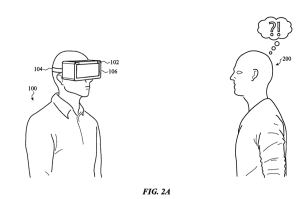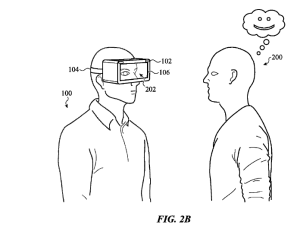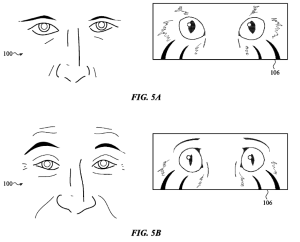Disclaimer: This blog was created for informational purposes only and does not represent Foresight’s or the author’s opinion regarding the validity, quality or enforceability of any particular patent covered in this blog. Foresight is not a law firm and no portion of the information contained in this blog was intended to serve as legal opinion.
In this week’s blog, we are following up on our first post in the series highlighting Rivian’s Spare Wheel Containers for a Vehicle (link to blog) patent application with a newly issued patent from Apple titled Wearable Device for Facilitating Enhanced Interaction. Apple Inc. designs, manufactures, and markets smartphones, personal computers, tablets, wearables and accessories worldwide and reported $383 billion in total revenues in fiscal year 2023, based on the company’s most recent annual report. In addition to the traditional offerings many of us use throughout our day, Apple is debuting a new form of content consumption, computer usage and productivity called the Vision Pro which is set to start accepting pre-orders on January 19th. The Vision Pro is a form of spatial computing that utilizes artificial intelligence and computer vision to combine virtual content with the physical world. Many will view this technology as the next step in Augmented Reality/Virtual Reality (AR/VR) and we have seen early forms of this technology in products such as Magic Leap or Oculus (now Meta Quest). While this blog is not an endorsement of the future of spatial computing, Apple’s participation in the market is a sign of market traction and likely growth in rollout of consumer products targeting the typical use of personal computers rather than being driven by gaming applications, which is the reason this patent was selected to be highlighted in this blog series.
As seen in the images below, the issued patent, which was filed in 2018, addresses the person to person interaction element that is anticipated when a user has a computing device covering the majority of their face. Given the intent of this device to be used in a similar manner in which our phones and computers are currently being used, there needs to be a way to allow personal interaction in a fashion that is not currently available in most VR or other head devices. To overcome this issue and to provide the user with awareness of and engagement with the real-world, the patent presents a system with internal and external cameras and displays to facilitate interaction between the wearer and another person or environment.
In order to allow the device to be a practical device for any number of targeted uses, isolating the wearer from the environment while also preventing those surrounding the user to interact with the user in a traditional way, requires the device to have the ability to show human expression which is a critical component of person to person interaction. One could easily argue that such a system is unnecessary but the same has been said about a myriad of technologies that have emerged over the past 10-20 years that we utilize every day, whether that is a personal assistant like Siri or a toaster with an interactive display. The inventive process should not be limited by current habit of the consumer, but rather, the inventive process should anticipate and nudge the consumer into seeing the value and purpose of the underlying inventive concept. This can be seen in other images from the patent copied below. Is it necessary to display the wearer’s facial expressions as if the wearer’s eyes were that of a lion? No, but it is a feature that consumers immediately understand due to the similarity to the endless number of filters we can apply to our faces during facetime or other video calls. Will this lead to enjoyable mishaps like the lawyer on a zoom conference in District Court that could not figure out how turn off the cat filter? It remains to be seen how the consumer interacts with the facial features of the Vision Pro and whether these features are “facilitating enhanced interaction” as the patent’s title says.
Have you come across any interesting patents you would like us to feature in future blogs or did you invent a technology you would like featured? Please send us an email at media@foresightvaluation.com or call our office at (650) 561-3374.







